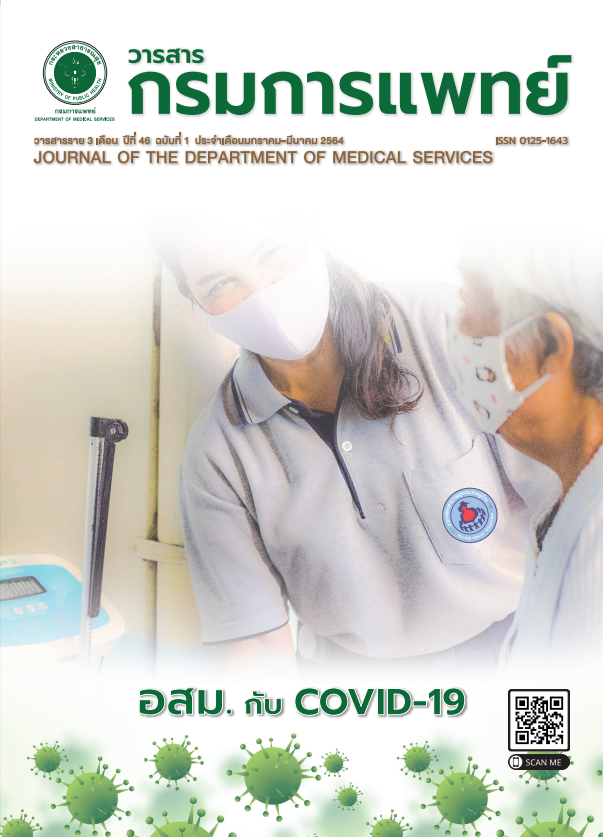Effect of Group Satir Model Based Program on Self-esteem Enhancement of Amphetamine Dependence in Compulsory Rehabilitation
Keywords:
Group counseling, Satir model, Self-esteem, Amphetamine dependence, Compulsory rehabilitationAbstract
Background : Most amphetamine addicts are people with low self-esteem. Group counseling based on the concept of Satir Model can increase self-esteem, leading them to the decision to stop using drugs.
Objective : The study aimed at investigating the effect of group Satir Model based program on self-esteem of amphetamine dependence in compulsory rehabilitation.
Method : This was pretest-posttest quasi-experimental. The participants were 10 amphetamine dependence patients in compulsory rehabilitation at Thanyarak Khonkaen Hospital. They were selected by purposive sampling from the 10 lowermost scores. The tools consisted of the Coopersmith Self-esteem Inventory and the Group Satir Model based program. The program required 8 sessions of attendance, each session lasted 60 minutes, two days a week. Wilcoxon Signed Rank Test was used in data analysis.
Result : All participants were male with the average age of 23 years old. Most of them were married (60%), had a secondary level of education (60%), and worked as general laborers (65%). Before the experiment, the average score of self-esteem was 59.70 (SD=17.64), after the experiment the average score of self-esteem was 87.10 (SD=19.17). However, the subscales of self-esteem on family and social aspects were significantly increased (p<.05).
Conclusion : The Group Satir Model based program could enhance the self-esteem of amphetamine dependence which would lead them to making the right decisions and living productively without substance dependence.
References
Delve into the health system. [Internet]. [cited 2019 July 20].Available from:https://www.hfocus.org/content/2019/07/17344.
Ritmontree S, Sawanchaeon K. Violent behavior to word family of methamphetamine users. Journal of Nursing Science & Health 2011; 34: 48-56.
Ritmontree S, Kanato M, Behavior related to illegal drugs in adolescents and their health effects. Community Health Development Quarterly Khon Kaen University 2014; 2: 57-67.
Suphatthaaphan N, Limsuwan N.(editor) Satir’s systemic Brief;2003.
Limsuwan N, Piyawatkun N, Anphongphaisan S, Satir Model.Journal of the Psychiatric Association of Thailand 2007; 52: 1-7.
Coopersmith S. The antecedents of self – esteem. 2nd ed . Palo Alto, C.A. :Consulting Psychologist Press;1981.
Satir V, Banmen J, Gerber J and Gomori M. The Satir model: family therapy and beyond. Science and Behavior Books, California;1991.
Satir V. Conjoint family therapy. Palo Alto Carifornia: Science and Behavior Books; 1967.
Sayles Carl. Transformational Change-Base on the Model of Virginia Satir; 2004.
Phawong K. The Effect of Group Counseling Based on the Satir Model for Self-Esteem of Inmates. Master of Education,Mahasarakham University; 2008.
Kongsook P. Family counseling for schizophrenic patients according to Satir ‘s concept. Independent Study Report Master of Nursing Science Mental Health and Psychiatric Nursing Program Graduate school Khon Kaen University; 2005.
Downloads
Published
How to Cite
Issue
Section
License

This work is licensed under a Creative Commons Attribution-NonCommercial-NoDerivatives 4.0 International License.
บทความที่ได้รับการตีพิมพ์เป็นลิขสิทธิ์ของกรมการแพทย์ กระทรวงสาธารณสุข
ข้อความและข้อคิดเห็นต่างๆ เป็นของผู้เขียนบทความ ไม่ใช่ความเห็นของกองบรรณาธิการหรือของวารสารกรมการแพทย์



